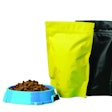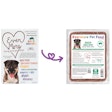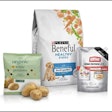
Packaging is often at the forefront of sustainability conversations, if only because it’s the most visible and understandable way to enact sustainability goals from the perspective of the consumer. Pet food packaging, as with any food packaging, has several challenges in the arena of sustainability — from creating recycling opportunities for the materials to educating consumers on what sustainability really means to a business, not to mention ensuring that any changes don’t affect the quality of the end product.
Consumer awareness and education
“Consumer awareness and interest in ethical and environmental pet food choices is set to grow as more pet owners become interested in green choices,” says Rebecca Casey, senior vice president of marketing and strategy for TC Transcontinental, a packaging, printing and specialty media company. “We have seen the growth in demand for sustainability, and as this demand heightens it is important to educate the consumer.”
While consumers have good intentions when it comes to making environmentally friendly purchasing decisions, there is a gap between their intention and their actions, according to Casey.
“Clear communication from brands on their packaging is a way to bridge this gap,” she says. “The term ‘sustainable’ can be difficult for consumers to fully understand. For example, 49% of UK household care product buyers are unsure about what brands mean by ‘environmentally friendly’ (Mintel). Using sustainability measurements such as fossil fuel consumption, greenhouse gas emissions or water usage will be easier for consumers to understand and will help give a fuller picture as to what environmental benefits a package provides.”
Recycling challenges
“Once communication is clearer for the consumer and explains how their purchasing decision is positive for the environment, the next step will be to clearly identify the process for recycling the package,” says Casey. “The flexible packaging industry is facing a low supply of recycled materials, showing the lack of recycling done by individual consumers. It is important to provide consumers with a sense of responsibility by providing direct instructions on how to recycle their package. The How2Recycle label can provide these instructions to the consumer, and the clear message explaining how to dispose of their package will provide actionable tasks that the consumer can follow through on.”
How TC Transcontinental meets the challenges of sustainability
The challenges are many, and there are a lot of things to consider when looking for solutions.
“Finding sustainable solutions while also maintaining the functionality, freshness and equipment performance that packaging provides is a challenge that TC Transcontinental Packaging accepted and achieved,” says Casey. “In our ASTRA Center, we work to develop innovative packaging, drive growth and be a dependable sustainability partner to our customers. We perform physical and analytical testing to simulate real life use and measure shelf life for packaging functionality requirements. We also have dedicated lab machinery to perform production scale customer prototypes and ensure packaging performance and efficiency once the development stage is completed.
“The many tests, instruments and technology available to us provide enhanced product development knowledge through the entire process of flexible plastic packaging design, allowing the development of innovative films for sustainability,” she says.
For the companion article, "2022 pet food business trends: sustainability, transparency,” published in the January 2022 issue of Petfood Industry magazine, see www.PetfoodIndustry.com/articles/10864.
















